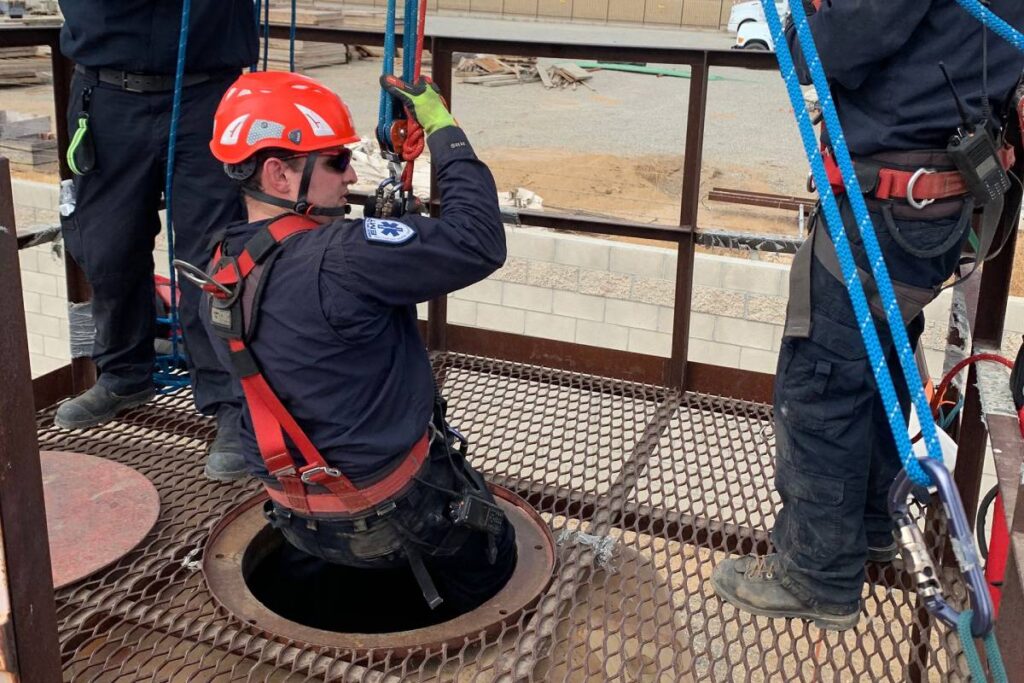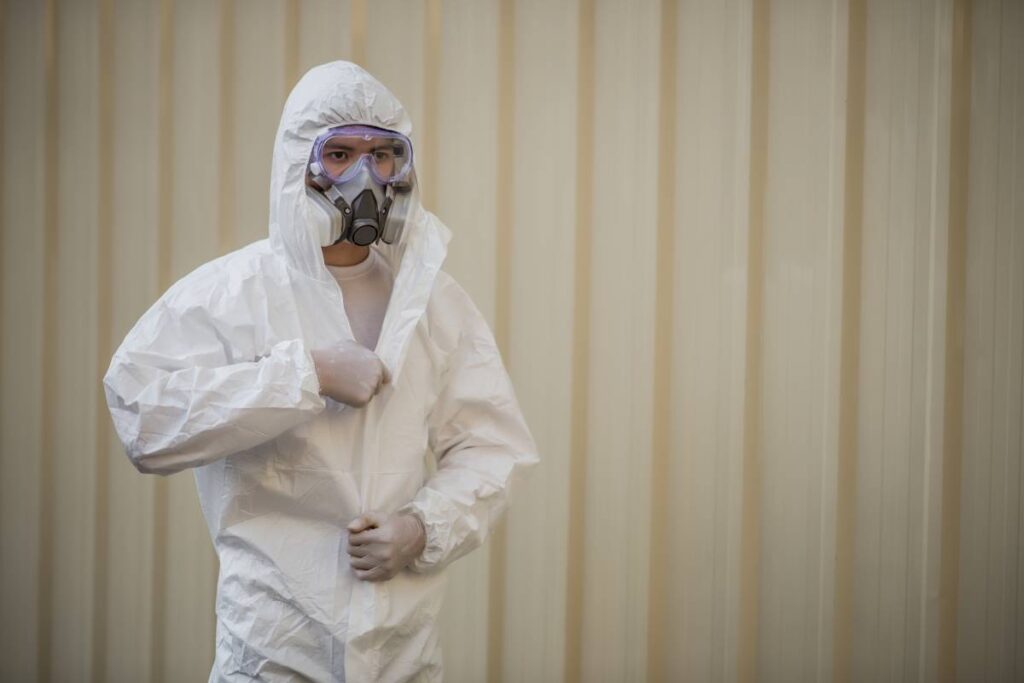Working in confined spaces poses serious risks that require proper training and preparation. This isn’t a working environment that one can simply stroll into unprepared. In order to be able to safely operate, whilst ensuring that your colleagues are also working safely, there’s a fair amount of training and preparation that is required beforehand.
In this article we’re going to examine what’s covered in your typical confined space courses, the various hazards involved with this kind of work, and the protective gear that will be needed in order to stay safe at all times and in any potentiality.
Hold onto your hard hat! Let’s delve right into it…
What is in confined space training?
So, what is involved with confined space training? What can you expect from such a course?

Confined space training equips workers to identify hazards, follow the appropriate safety procedures, and respond to emergencies when entering and working within confined spaces. Typical training components include:
- Hazard awareness: recognising dangers like poor ventilation, engulfment, entanglement, noise, falls, and more – including recognising when a colleague may be in danger of suffering from a panic attack due to feelings of claustrophobia (the fear of being in a confined space).
- Risk assessment: evaluating potential hazards using tools like atmospheric testing and permit systems to ensure that a space is indeed safe to enter and operate in.
- Isolation procedures: learning proper lockout and isolation methods for electricity, piping, and mechanical equipment.
- Ventilation techniques: applying proper ventilation to control air contaminants.
- Emergency response: first aid, CPR, and how to effectively rescue individuals from confined spaces.
- Communication methods: using radios, signage, spotters, and other communication systems to enable you and your colleagues to collaborate well in confined spaces without risk of miscommunication.
- Safety equipment: training on the proper use of PPE (personal protective equipment) such as harnesses, respirators, gas monitors, and the appropriate clothing.
- Entry/exit procedures: following safe entry and exit protocols with checklists and permits.
- Regulations and standards: reviewing legislation, codes of practice, and industry standards for confined space work relative to your chosen Australian state.
- Hands-on simulations: realistic practice scenarios for skills application and building confidence when working in confined spaces.
Refresher training is recommended every 2 years to maintain qualifications. This is particularly important if you wish to remain competitive when applying for different work throughout the confined spaces industry.
What are the hazards of working in a confined space?
Now let’s take a look at the various hazards that one must be aware of when working in confined spaces.

Rest assured that this section isn’t intended to put fear in you, but to highlight the immense importance of being properly trained so as to avoid any of the following—and sometimes fatal—hazards:
- Hazardous atmosphere: you may be subject to a lack of oxygen and the potential for poisonous or flammable gases.
- Engulfment: being trapped or drowned in liquids or free-flowing solids.
- Entanglement: getting caught in augers, cables, mixers, or conveyors, etc.
- Noise: hearing damage from loud machinery and equipment.
- Thermal extremes: heat stress or hypothermia.
- Poor visibility: darkness, steam, or fog.
- Falls: potential falls from ladders or slippery surfaces.
- Electrical: danger of exposed wires, cords, and circuits.
- Moving parts: being struck by or caught in heavy machinery.
- Manual handling: lifting heavy objects.
- Fatigue: it is physically demanding work which means that managing your fitness levels and recognising when you are reaching your physical limits of exhaustion is paramount.
- Salvation: referring to having difficulty exiting the confined space.
As you can see, some of the hazards on this list are absolutely horrifying. However, with proper training, the risks involved can be minimized significantly so as to ensure that you and your colleagues can get in and out without any cause for concern.
And of course, the one consolation is that working in confined spaces often means earning hazard pay, which makes it that little bit more exciting.
What PPE is required for confined space entry?
Working in confined spaces is dangerous, as we have already established – which means that you must be wearing the appropriate PPE at all times. Let’s take a look at some of the PPE you can expect to rely on in this industry (required PPE will vary depending on the nature of your work in confined spaces):

- Head protection: hard hats protect from falling objects and bumps.
- Hearing protection: earplugs or earmuffs when noise exceeds safe levels.
- Eye and face protection: safety glasses, goggles and face shields.
- Hand protection: gloves suitable for the work at hand.
- High visibility clothing: bright vests or shirts for increased visibility.
- Protective clothing: fire-resistant and anti-static options are available.
- Protective footwear: steel-capped boots with grip soles.
- Respiratory protection: masks or self-contained breathing apparatus.
- Gas monitors: portable or wearable monitors to detect air contaminants.
- Safety harnesses: full body harnesses for fall prevention and rescue.
- Intrinsic safety equipment: radios, flashlights, and cameras rated for hazardous areas.
- Access equipment: ladders, scaffolding or elevated work platforms.
- Rescue equipment: for self-rescue or organized rescue teams.
Again, the specific PPE required will depend on the confined space hazards identified by risk assessments. Using the right gear is crucial for staying protected on the job – and indeed keeping those around you safe as well.
Conclusion
Working in confined spaces requires specialized skills, constant hazard awareness, and the right protective equipment. Comprehensive training gives workers the know-how to follow safety procedures, use PPE properly, and respond quickly to any emergencies when the work environment is inherently risky.
The focus of a confined space training course is ensuring all workers are able to recognize any emerging dangers, avoid hazards completely when possible, control remaining risks, and exit the space safely when the job is done.
We hope that you have found this article insightful and wish you the best of luck on your confined spaces training course and your future career advancement.

